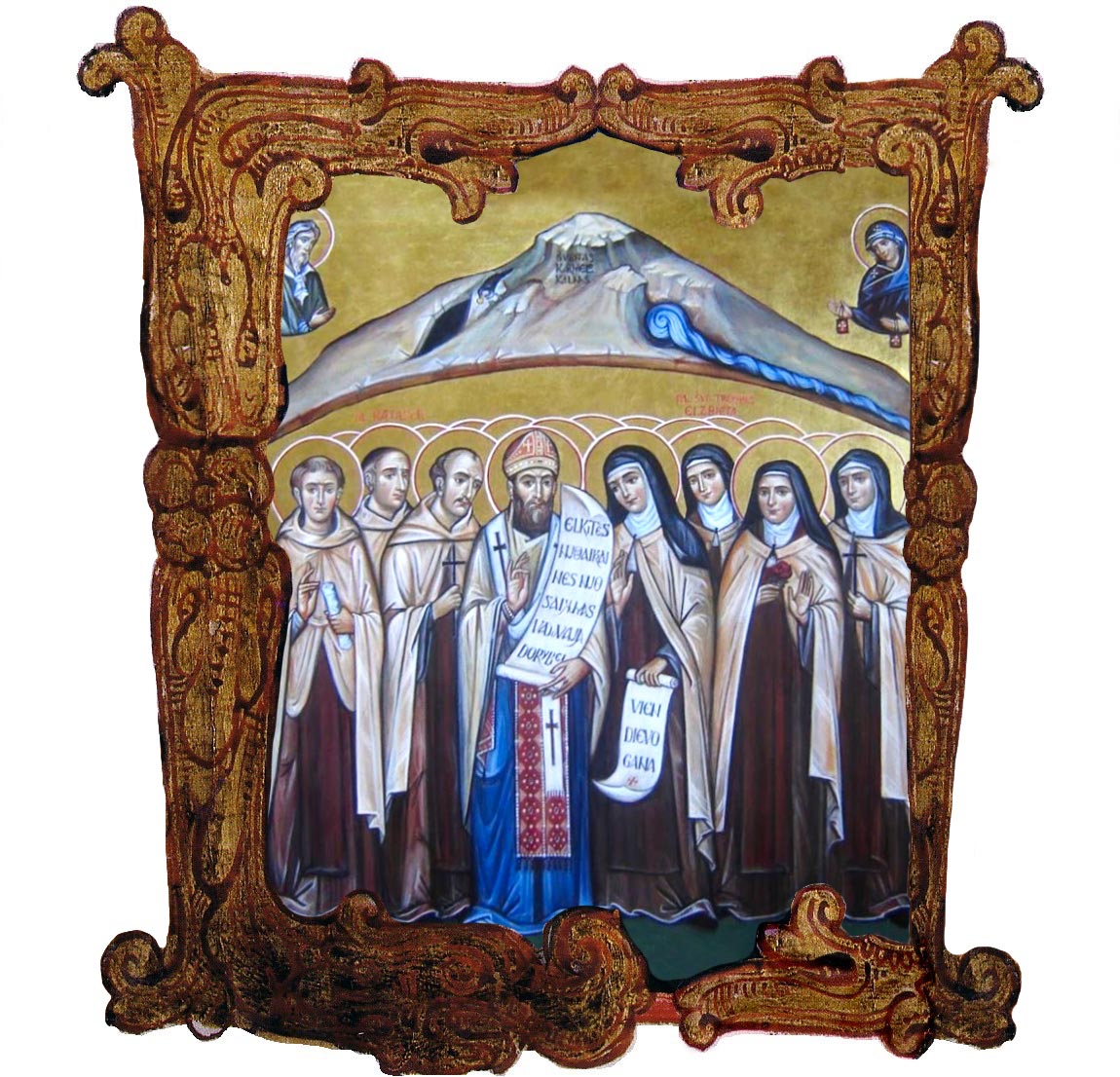
II. The Teresian Charism
5. The origin of our family in Carmel and the very nature of its vocation are closely bound up with the life and charism of St Teresa, especially with the mystical graces which led her to undertake the renewal of Carmel and make prayer and contemplation its total commitment. The renewed Carmel – like the ‘little flock’ in the Gospel – was to be made up of a chosen few, totally pledged to living the Gospel and keeping the ‘primitive Rule’ in solitude, and strict poverty.
6. Further stages of St Teresa’s spiritual experience contributed to the unfolding of her project and to a clearer perception of its significance. As she was mystically led to a deeper knowledge and, as it were, ‘experience’ of the life of the Church, its trials and sufferings, the recent break-up of its unity and especially the profanation of the Eucharist and the Priesthood, she stressed more and more the apostolic spirit of the renewed Carmel. Its prayer, its withdrawal from the world, indeed the whole life of the first group of nuns were to be dedicated to the service of the Church.
7. Finally the renewed Carmel’s vocation was fully and clearly defined when the Holy Mother’s growing experience of the Church focused her attention on those who had not yet had the Gospel preached to them. Then the immense prospects of the missions dawned on her. As a result her apostolic spirit fully evolved, and she made up her mind not only to have the first group of her nuns spread out into other foundations, but to include in her project a group of friars who would share in the same spirit.
8. Her aim in founding a family of friars was to foster the fidelity and spiritual growth of her nuns through the assistance of brothers of the same spirit, and to provide the Church with a manifold service of prayer and apostolic activity.
9. In all that she did she wished to keep intact the heritage of Carmel. Its devotion to our Lady of Mount Carmel was faithfully kept and reinvigorated. She bequeathed to her followers her own affinity with the biblical forerunners, the great prophets and fathers of Carmel. She went back to the genuine spirit of the Rule and infused its observance with a fresh apostolic impetus.
10. The way of life she proposed to us was to be marked with a distinctive style and character. She wanted social virtues and human values to be duly fostered. She inculcated a joyous family spirit, affability in community life, nobility of soul and mutual respect. Our young religious were to be carefully trained; study and culture were to be encouraged. The ascetical practices of our communities were to be at the service of a deeper theological life, and geared to the demands of the apostolic ministry. There was to be a bond of unity between our communities and of evangelical friendship between our religious.
11. To achieve this, Providence gave the Holy Mother an associate, St John of the Cross. When she first became acquainted with him and found that the Holy Spirit had already given him the same aspirations as herself, she told him of her plan for spiritual renewal within the Order of our Lady. She led him to share in her spirit and put before him the pattern of life she had introduced for her nuns. That is the way of life, adapted according to the mind and spirit of St Teresa, which St John then set about establishing at Duruelo.
Later, when St John was her spiritual director she looked upon him as the ‘father of her soul’. He in turn proclaimed her the mother of the new Carmelite family, and ascribed to her that charism which God bestows upon founders of religious Orders.
Together they introduced a renewed lifestyle into Carmel, both among the friars and the nuns, and ‘as it were, laid anew the foundations of the Order’.
12. The Holy Mother’s life and mystical experience were in effect God’s way of preparing for us a guide and model of life.
In St John of the Cross, too, we have a living image of the true Carmelite. We can apply to him the words of St Paul: ‘Take me for your model, as I take Christ’ (cf. 1 Cor 4:16; 11:1). The vocation of the renewed Carmel is mirrored in his life and his teaching.
13. Our ideal finds a living expression in these two Saints and is clearly portrayed in their writings. Their charism and the spiritual lifestyle they propose to us – even their intimacy with God and the experience of things divine – are not just purely personal gifts of their own, but part of the heritage and vocation of the Order.
14. This is the grace that God in his merciful goodness graciously offers to every member of the Order. It is the Carmelite charism we must learn to appreciate, to cultivate and develop according to the gifts given to each of us by the Holy Spirit.

